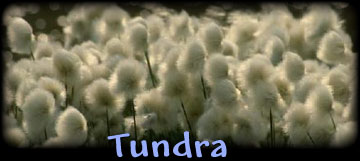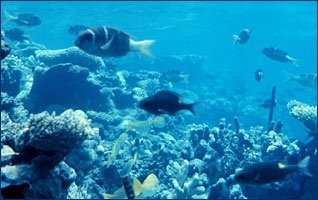Biomes- a large naturally occurring community occupying a major habitat.
Tundra, the Biome is at the top of the world, around the north pole. Below the tundra is a thin layer of tundra soil, is its permafrost.. It is a permanently frozen layer of ground, during the Summers the top section of the soil may thaw. Long enough to allow plants.
Tundra is mainly treeless, it is noted for its frost-molded landscapes, extremely low temperatures, very little precipitation, poor nutrients, and some short growing seasons.
The marine biome covers about three-fourths of the earths surface and include oceans, coral reefs, and estuaries. marine algae supplies much of the worlds oxygen. the evaporation of the seawater provides rainwater for the land.
Estuaries are area where freshwater streams or rivers merge with the ocean. this mixing of waters with such different salt concentrations creates a very interesting and unique ecosystem.
Desert: The hot desert is a land of extremes: extreme heat and extreme dryness, sudden flash floods and cold nights. Because deserts are such a harsh environment, desert temperatures are in excess of 100 degrees Fahrenheit is not uncommon. at night in the desert temperatures fall into the 40s or 50s.
Other biomes are insulated by their humidity (water vapor in the air). This water reflects and absorbs sunlight and the energy it brings. deserts usually have only between 10 to 20 percent humidity and it also traps the temperatures. and they have so little trees and little vegetation to retain heat, they cool down rapidly when the sun sets, and heat up quickly after the sun rises. Deserts are usually very, very dry. event eh wettest deserts get less then ten inches of precipitation a year.
Tundra is mainly treeless, it is noted for its frost-molded landscapes, extremely low temperatures, very little precipitation, poor nutrients, and some short growing seasons.
The marine biome covers about three-fourths of the earths surface and include oceans, coral reefs, and estuaries. marine algae supplies much of the worlds oxygen. the evaporation of the seawater provides rainwater for the land.
Estuaries are area where freshwater streams or rivers merge with the ocean. this mixing of waters with such different salt concentrations creates a very interesting and unique ecosystem.
Other biomes are insulated by their humidity (water vapor in the air). This water reflects and absorbs sunlight and the energy it brings. deserts usually have only between 10 to 20 percent humidity and it also traps the temperatures. and they have so little trees and little vegetation to retain heat, they cool down rapidly when the sun sets, and heat up quickly after the sun rises. Deserts are usually very, very dry. event eh wettest deserts get less then ten inches of precipitation a year.
Grassland biomes are found in every continent except Antarctica.
have Tempera
The word "deciduous" means exactly what the leaves on these trees do: change color in autumn, fall off in the winter, and grow back again in the spring. This adaptation helps trees in the forest survive winter.te Deciduous Forest biome has four seasons of winter, spring, summer, and fall. Animals and plants have special adaptations to cope with these yearly changesdaptations to cope
During the shorter days and cooler weather of autumn, green chlorophyll in the leaves begins to decompose, revealing brilliant oranges, yellows, and reds. Actually, these colors were present in the leaves all year long, but had been hidden by the green pigment of the chlorophyll.
with these yearly changes.
Temperate Deciduous Forest biome has four seasons of winter, spring, summer, and fall. Animals and plants have special adaptations to cope with these yearly changes





No comments:
Post a Comment